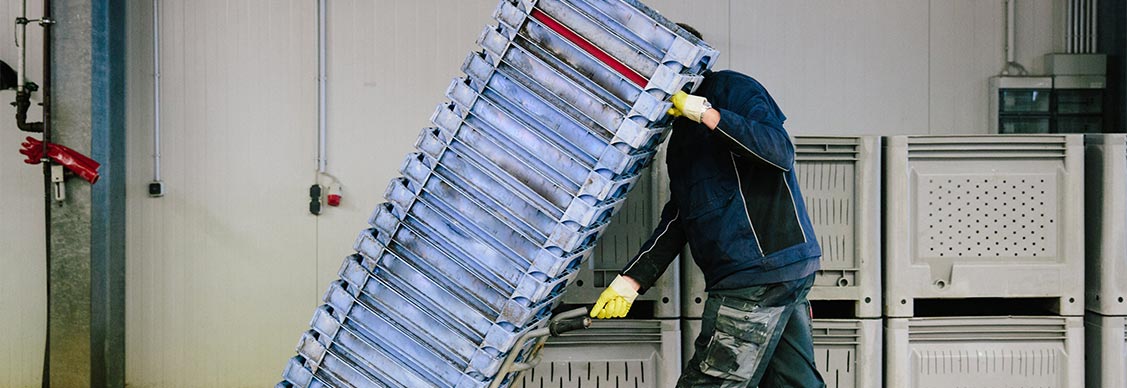How demand for fresh food is squeezing cold storage space
Construction of refrigerated warehouses is rising but may not be enough to meet demand
People turning to online grocery shopping is pushing up demand for refrigerated warehouses, which are in increasingly short supply in countries around the world.
Take Australia’s acute situation. Globally, there is about 0.15 cubic metres of refrigerated warehousing space per urban resident. Australia has around half that, according to the Global Cold Chain Alliance.
The bulk of new space developed since 2018 has been concentrated mainly in North America, India and China. But even in the U.S. facilities are running at maximum capacity, according to JLL.
“Consumers are eating healthier and fresher food, opting for the convenience of buying it online,” says Michael Ignatiadis, head of supply chain and logistics solutions – APAC, JLL “Combine this with a rising middle class in Asia, which is eating out more and shopping in modern supermarkets, and growing urban populations, and you have a cluster of trends driving demand for cold storage.”
The demand is prompting developers to respond, resulting in a construction boom.
Cold storage construction is projected to reach US$18.6 billion in value by 2027 - an increase of 13.8 percent per year, according to consulting firm Emergen Research.
But even at this pace the space shortage is likely to persist given the demand for fresh food, Ignatiadis says.
Looking for more insights? Never miss an update.
The latest news, insights and opportunities from global commercial real estate markets straight to your inbox.
In the U.S., online grocery purchases as a proportion of the overall grocery market are forecast to more than double by 2025 to 21.5 percent, according to a study by grocery ecommerce specialist Mercatus and research firm Incisiv. In Asia Pacific, research company Forrester expects online grocery services to grow by 30 percent each year up to 2024, doubling its share of the online market to 10.6 percent.
However, the ability to accommodate this growth is challenged by an inadequate end-to-end cold chain solution, says Michael Ignatiadis, head of supply chain and logistics solutions – APAC, JLL.
“Take Vietnam’s seafood export sector, the third largest in the world, which uses a major part of the cold storage space. During the peak of the pandemic 30 to 50 percent of seafood export orders were cancelled leading to inventories pilling up and cold storage facilities reaching their maximum capacity. With a cold supply chain that is highly fragmented and run mostly by small-medium providers, cold storage is a big opportunity for sophisticated operators,” he says.
Investment Opportunities
In the UK, 80 percent of raw food product is sourced outside the country and there have been well-publicised shortages of fresh fruit and vegetables.
“Although we expect this to change over time, it will lead to greater need for home-grown foods and subsequent storage,” says Alan Selby, sales director, industrial refrigeration at JLL’s Integral.
Adding to current pressures, vials of COVID-19 vaccines need to be stored in refrigerated warehouses as well.
Building the next generation
The supply squeeze is partly down to the fact that these facilities take longer to build than other logistics real estate.
“The cost and complexity of building cold storage warehouses compared to standard warehouses, combined with the fact that tenants usually lease them for longer periods because of the specific fit-outs required, has led to a scarcity across the globe,” says Gary Hyland, industrial occupier services – Australia, JLL. “Upfront investment is typically two to three times more than a dry warehouse and construction can take up to six months longer.”
Rising investment
The market dynamics of the cold storage sector, along with underlying drivers like population growth, and leases that are typically 15 to 20 years, has been garnering the attention of real estate investors, both in the equity and lending communities.
They are also looking to cold storage as an alternative investment to traditional industrial real estate where investment yields have been driven to historic lows.
“The supply shortage of cold chain facilities and increased complexity of operating them translates to higher yields than dry warehouses,” says Tom Woolhouse, head of logistics and industrial – APAC, JLL. “But the sector is becoming mainstream, attracting investors looking for high spec facilities, which is closing the gap.”
Australia’s Centuria Industrial REIT last year bought a 9,554 square metre cold storage facility in Queensland, occupied by Markwell Cold Storage, one of the largest privately-owned companies in the Australasian food sector.
Meanwhile, Americold Realty Trust, a U.S. REIT focused on temperature-controlled warehouses is in the process of building or preparing to build out massive facilities to meet demand.
With the globalisation of food industries, logistics players are also looking to expand into new markets, demonstrated recently by U.S.-based industrial REIT Lineage Logistics making its foray into Spain in May this year, its 16th country.
Netherlands-based cold logistics supplier, NewCold is boosting the UK’s capacity with its second facility there expected to go live in October 2021.
What’s your investment ambition?
Uncover opportunities and capital sources all over the world and discover how we can help you achieve your investment goals.




